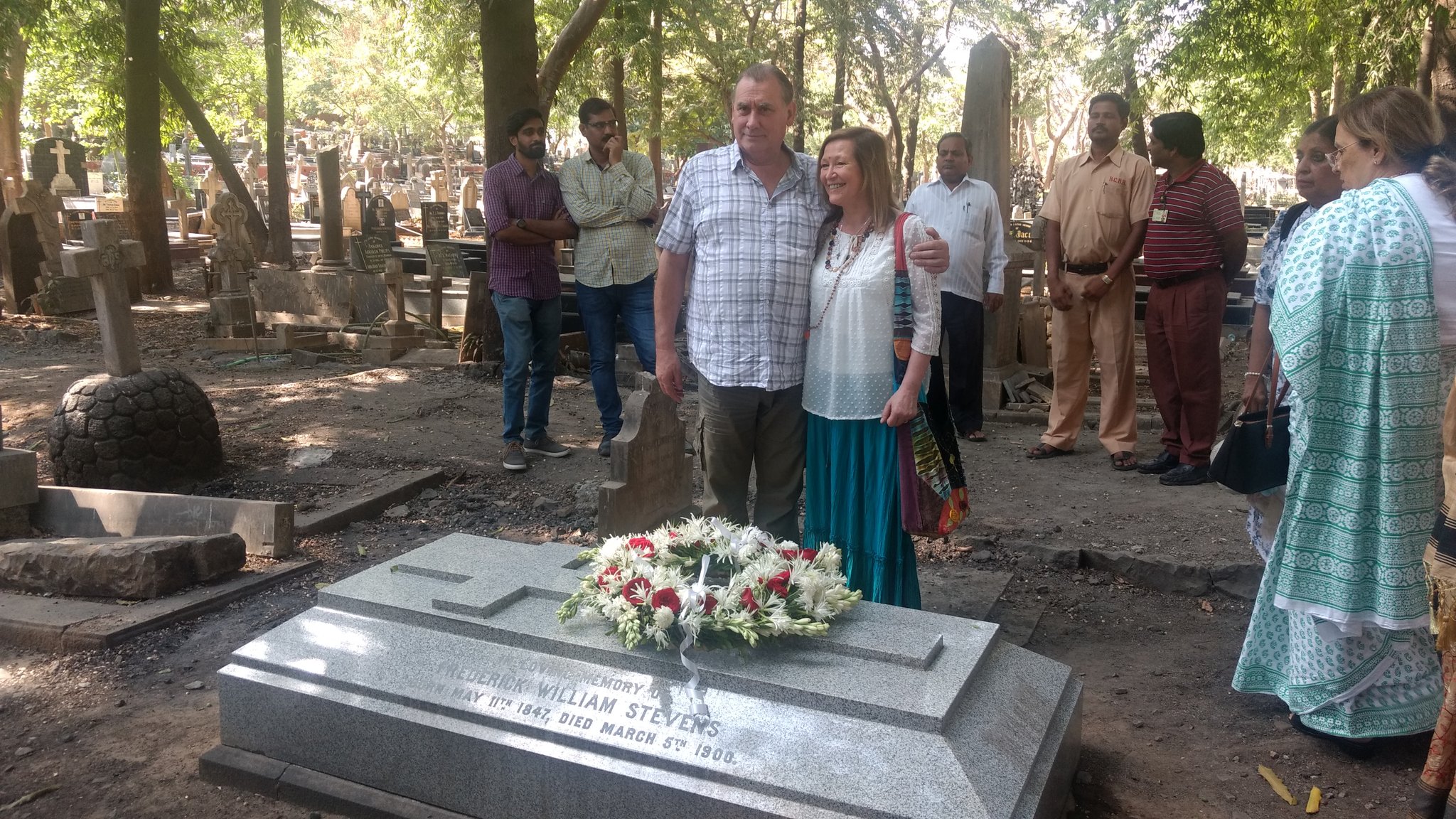A Sentimental Visit to Mumbai to See Her Great Grandfather's Magnificent Buildings
F.W. Stevens designed Victoria Terminus, now CST, and many iconic structures of Victorian-era Mumbai.
As she stepped into Mumbai’s Chhatrapati Shivaji Terminus (CST), formerly Victoria Terminus, Diana Robertson was overwhelmed with emotion. For 59-year-old Diana, this was a memorable moment – it was the very first time she was seeing the work of her great grandfather Fredrick William Stevens who had designed the magnificent edifice in the 19th century.
Clasping her husband Kevin’s hand, she looked around the frenetic rush hour crowd as she looked around the iconic railway station, one of the finest examples of ‘Bombay Gothic’, the style that took the city by storm in the middle of the 19th century. Diana knew her illustrious ancestor had made some well known buildings in Mumbai, but had no idea that he was so loved and regarded by the city.
On a one-day visit to Mumbai, Diana went on a whirlwind tour of all the buildings that he had designed during the flush of an economic boom when the Raj – first the company and then the Crown – decided to demolish the Fort and free up a lot of land.
“I have always wanted to be here and it I am so, so happy that I could finally make it,” she said, as she arrived at her hotel from the airport after a 1-1/2 hour long road journey. But despite the heat, delay and the fatigue after her flight from London she did not want to wait. Within 20 minutes, she was fresh again and ready to see the glory of her ancestors, Stevens and his son Charles.
Diana and her husband, residents of Southampton, England, are on a 15-day trip to India accompanying tourists and will be going to Jaipur, Delhi and other places. Naturally, Mumbai was a special stopover. The visit happened by chance. Sr Anita Rane-Kothare, who teaches Ancient Indian culture at St Xavier’s College, heard about Diana who was curious to know if anyone in Mumbai knew about Stevens. The two got in touch – “you cannot imagine how excited Diana was to get in touch with me,” said Rane-Kothare. Things moved swiftly and the Central Railway got involved and it became an event.
Hosted by the Bombay Local History Society and Central Railway, the Robertsons first visited the Sewri Christian Cemetery where Stevens is interred. The grave has been refurbished with a new stone and is a pilgrimage of sorts for railway buffs. The next stop was the imposing CST building where an event was organised to show her around Stevens’ work. The Central Railway authorities, who have now become extremely heritage conscious, took out original drawings and other archives for a view.

Diana Robertson and her husband Kevin at the grave of her great grandfather, the architect F.W. Stevens, in Mumbai. Credit: Rajendra B Aklekar
A native of Bath, Stevens articled as an architect for five years and headed to India after passing a competitive examination. His first job was with the Public Works Department (PWD) as an assistant engineer and then the railways. He designed several notable buildings in Mumbai, among them the Municipal Corporation headquarters, the Royal Alfred Sailors’ Home, the Western Railway HQ and of course CST – completed in 1888 and originally named after the Empress – which won him a bonus of Rs 5,000. All these structures form the imposing Victorian skyline of the city and were a grand statement by the Raj when they were first built. Stevens also designed and supervised buildings in Calcutta, Kanpur, Agra, Benaras, markets at Patan and court houses at Mehsana for the Gaekwads of Baroda.
He died of malaria at the age of 54 in 1900. His son Charles continued to practice architecture in the city and finished a few of his projects. “My grandmother Helen always used to speak about India and the memories there all her life. Helen was one of Charles’ four children and said they had remained in India till the 1920s,” Diana said.
Till now, the CST building was only an image for them. They have a water colour at home and of course had seen it in Slumdog Millionaire. “Now we’ve seen it ourselves."
Rajendra B. Aklekar is the author of two books on the railways in India.
This article went live on April twenty-second, two thousand seventeen, at zero minutes past eight in the morning.The Wire is now on WhatsApp. Follow our channel for sharp analysis and opinions on the latest developments.






